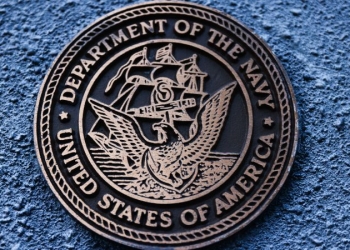President Donald Trump intensified pressure on America’s trading partners on Monday by issuing letters to several nations regarding new tariff rates. He signed an executive order extending the deadline for imposing ‘reciprocal’ tariffs—excluding China—until August 1.
Originally set to take effect on Wednesday, these tariffs are subject to adjustments, as noted in the letters sent to leaders from Japan and South Korea, who will face a 25% tariff effective August 1. Both countries expressed intentions to further negotiate with the U.S., with Japan signaling progress towards a potential trade agreement.
Additional letters were dispatched to leaders from Malaysia, Kazakhstan, South Africa, Myanmar, and Laos, announcing tariff rates that could reach as high as 40%. Trump later shared seven more letters sent to Tunisia, Bosnia and Herzegovina (which faces a 30% tariff), Indonesia, Bangladesh, Serbia, Cambodia, and Thailand—bringing the total to 14 letters sent on Monday alone.
In his correspondence, Trump cited concerns over the trade deficits the U.S. has with these nations, stating that America imports significantly more than it exports. He indicated that these tariffs would respond to policies hindering American goods’ access in foreign markets and urged foreign leaders to consider manufacturing in the U.S. to sidestep tariffs.
This move precedes a July 9 deadline for countries to negotiate deals or potentially face increased tariffs. Since mid-April, affected nations have been observing a minimum tariff rate of 10%.
Trump cautioned in his letters that higher tariffs would be considered should any country retaliate with their own tariffs against the U.S. He clarified that these new rates would not accumulate on top of existing sector-specific tariffs, a statement corroborated by a White House official.
Notably, while Trump has expressed significant grievances regarding the European Union’s trade practices, it appears no correspondence was received by EU leaders. Olof Gill, a spokesperson for the European Commission, stated, ‘We’re not going to comment on letters that we haven’t received.’ Meanwhile, Irish Minister for Foreign Affairs Simon Harris noted an apparent extension of the status quo until August 1 for the U.S. and the EU to reach a mutually beneficial agreement.
The implications of these tariffs are substantial. According to the U.S. Commerce Department, the U.S. imported $465 billion worth of goods from the 14 countries in question last year, with Japan and South Korea responsible for $280 billion—over 60% of this figure.
American consumers may face increased prices for goods due to these tariffs. Key imports from South Korea and Japan include vehicles, auto parts, semiconductors, pharmaceuticals, and machinery, many of which have already been under tariff threats.
In response to the tariff announcements, Japan’s Prime Minister Ishiba expressed disappointment, stating Tokyo’s commitment to continue negotiations for a beneficial trade deal. South Korea’s Finance Ministry indicated it would closely monitor tariff developments and warned of immediate responses to excessive market fluctuations.
Although other nations ship fewer goods to the U.S. compared to Japan and South Korea, they remain critical suppliers. For example, South Africa’s goods faced a 30% tariff, even as it accounted for about half of the U.S. platinum imports last year. In contrast, Malaysia will see a slightly reduced tariff of 24%, as opposed to a previously set 25%.
Stock markets reacted negatively to the tariff announcements, with shares of major manufacturers, notably Japanese automakers Toyota, Nissan, and Honda, experiencing declines. The Dow closed down by 422 points (0.94%), while the S&P 500 fell by 0.79% and the Nasdaq Composite by 0.92%, marking the worst trading day for the three indices in nearly three weeks. Stocks in Asia started Tuesday trading without major fluctuations.







